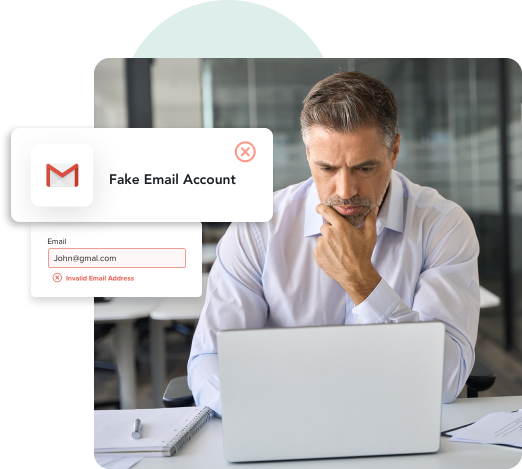In the wake of the coronavirus outbreak, brands of all kinds now want to know about how to host a virtual conference in 2020. The top branding agency in London can show you a step-by-step guide for hosting a virtual conference in 2020.
Table of Contents
1. Pre-Event Marketing
You need to reach out to your target audience so that they become aware of your virtual conference. Virtual events provide many benefits for both the hosts and participants.
In your Pre-event marketing stage, you should clearly state how your event can help participants excel in their field of business, and also explain why a virtual event is a must see for them during these strenuous times.
Virtual events (for instance, webinars) had been growing in popularity over the past few years thanks to their convenience and cost saving benefits. Participants do not need to travel or pay for hotel costs to attend a distant event. There are many who cannot attend events due to travel costs and time constraints. With virtual events though, these barriers to attendance do not exist. Thus, people from all over the world can attend with minimal cost and no hassle. Both hosts and participants can save a lot of energy, time and money by going this route.
Virtual events are now imperative since the covid-19 outbreak will likely not abate any time soon. Virtual events are just what you need to get around lockdowns and to extend safety measures to event participants. Participants can observe isolation and still attend the event from the comfort of their homes.
You should press home these concepts to convince the maximum number of people to attend.
To this end, you can issue a press release, transmit mass emails to likely prospects and past participants, embark on a social media campaign, display event details on your corporate website and request sponsors and all stakeholder to publicize the event and inform their acquaintances about it.
2. Online Registration
You must include all of the aforementioned benefits in a landing page made for online registrations. You will have to include the following information in your landing page.
- Time and date of your virtual event
- Benefits (comfort, ease of access, no travel costs, time saving as well as business benefits)
- Names of all speakers and their introduction
- Timeline of events
- List of sponsors and participants (that have confirmed participation)
The kind of registration process you choose can influence the number of participants. You should try to minimize the steps involved in the registration so that maximum numbers can sign up with ease.
Here are the different processes that you can choose.
Open Entry
This is the most hassle-free and convenient process for participants since registration steps are at a bare minimum. Anyone with the link can attend since registration is open for the general public.
Registered Members
You will have to provide an online registration form to allow people to sign up for the virtual event. The fewer the fields, the better. If you want more information, you can request it later on after the virtual event.
Invitation Only
You will have to communicate information about your virtual event to participants who are invited. A login page should be setup so that only invited members can join.
3. Speaker Outreach
Since speakers are the major attraction for the virtual event, you must make an extra effort to entice the most prominent personalities in the industry to participate in your event. This will make your marketing endeavor much easier and draw maximum number of attendees at your event.
You can influence speakers by mentioning the same benefits that you will be publicizing to participants. Inform them about the business benefits that they will gain in their fields as thought speakers. It is also vital to mention how virtual events can help them save time, money and energy especially in these difficult times.
You should show them the event schedule and indicate which event activity will be dedicated to them. You can also discuss with your prospective speakers how they would like to deliver their presentation. Here are a few options.
Live
Using an internet-enabled camera, the speaker can deliver their presentation when it is their turn to talk. The speech and live video will go live to all participants. Participants should be able to ask a few questions during allotted times in the presentation.
Semi-Live
In this scenario, a prerecorded presentation will be telecast to participants. Hence, the presentation itself will not be live. But the speaker will be available for live discussions with the audience. They can hold a live question and answer session and invite opinions from the audience.
On Demand
There is no live presentation in this case, just a prerecorded presentation. There will be no question and answer session either.
4. Virtual Event Platforms
You can make virtual booths available for exhibitors and speakers. They should have access to the system so that they can create their own booth design. They should be able to upload their presentations and marketing content on their virtual booth. There should be a live feed capability so that both exhibitors and attendees can interact in real-time. The experience should be very similar to a ‘physical’ event where participants can talk face-to-face.
State-of-the-art virtual events platforms are now available so that exhibitors, speakers can presenters can have their own highly customized virtual space during the online event. With these virtual platforms, exhibitors can manage visitors, talk to them in real-time and take event marketing to the next level.
Cutting edge virtual platforms will completely transform the virtual event experience. It is now an indispensable component for event marketing thanks to the incredibly convenient and comfortable user experience – visitors can reach out to you from the comfort of their homes.
Although these were the most basic steps, there is much more to virtual event hosting. The premier branding agency in London can professionally manage your virtual event to make it a success.
Richard Kearsey is a digital designer at Emerald Colour – a creative design agency in London that offers various services, like presentation design, animation, bespoke exhibition stand design, etc. He loves creativity and enjoys experimenting with various design techniques for both web and print. He also enjoys sharing his thought on the latest design trends and upcoming marketing ideas.
















